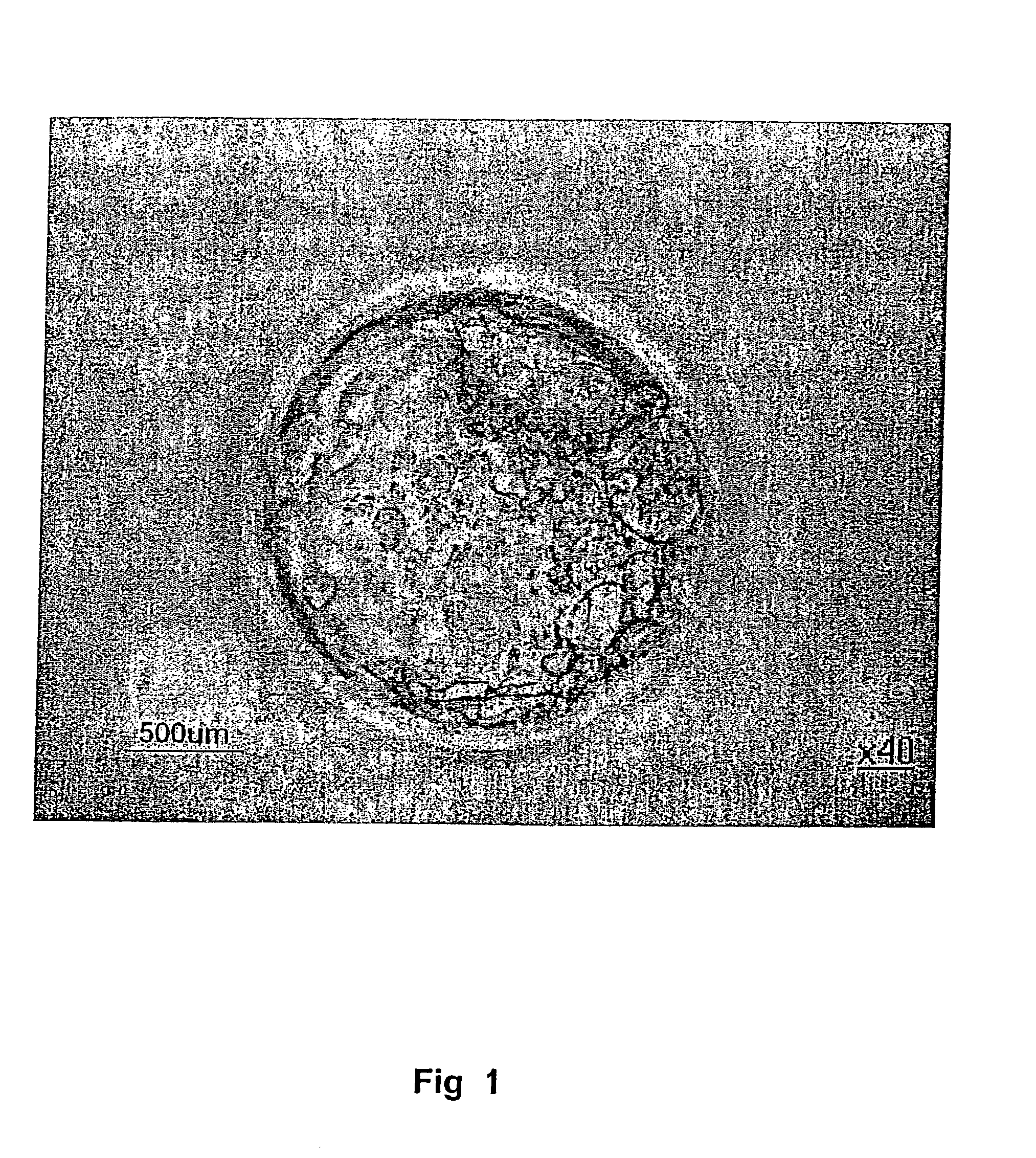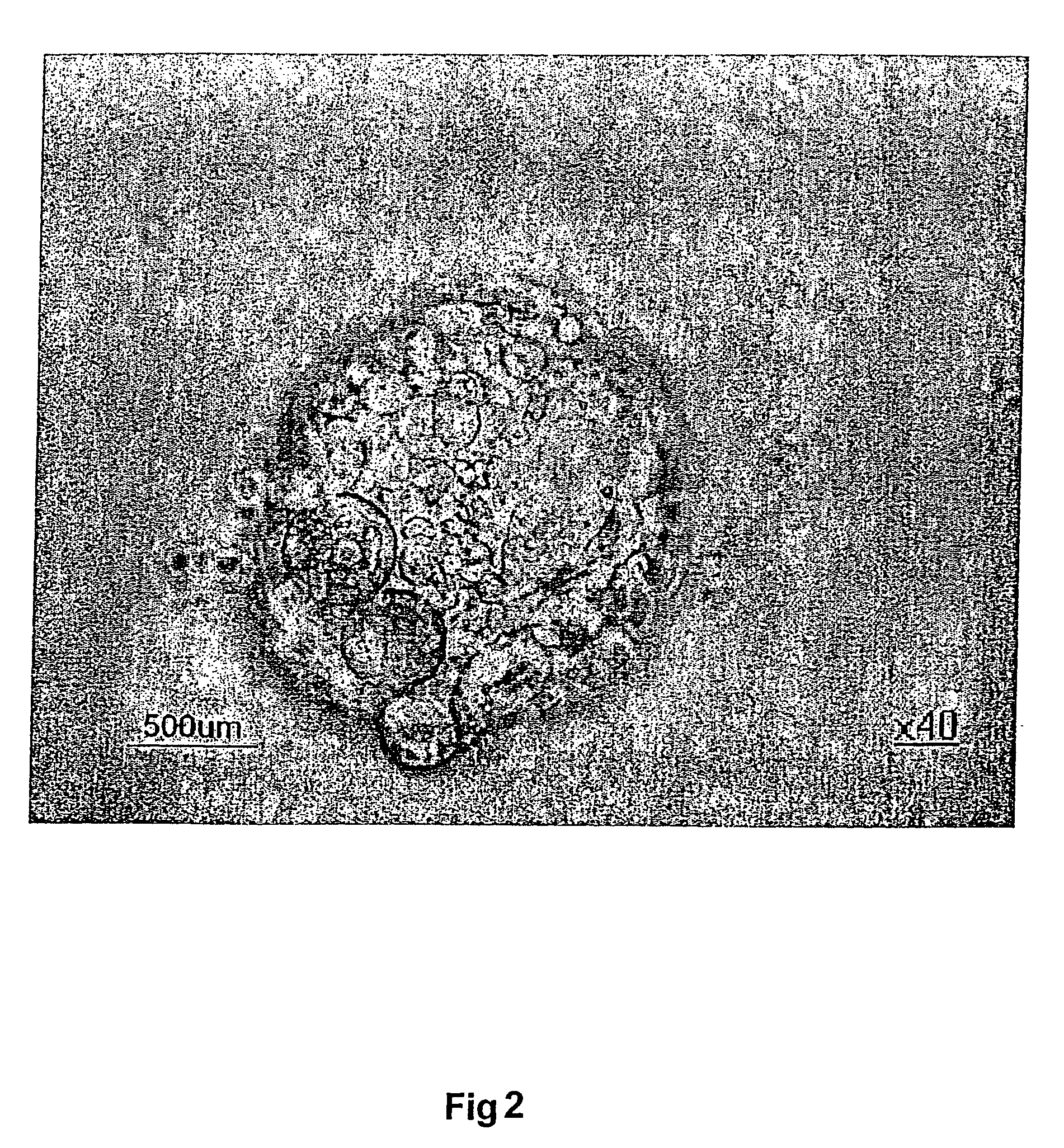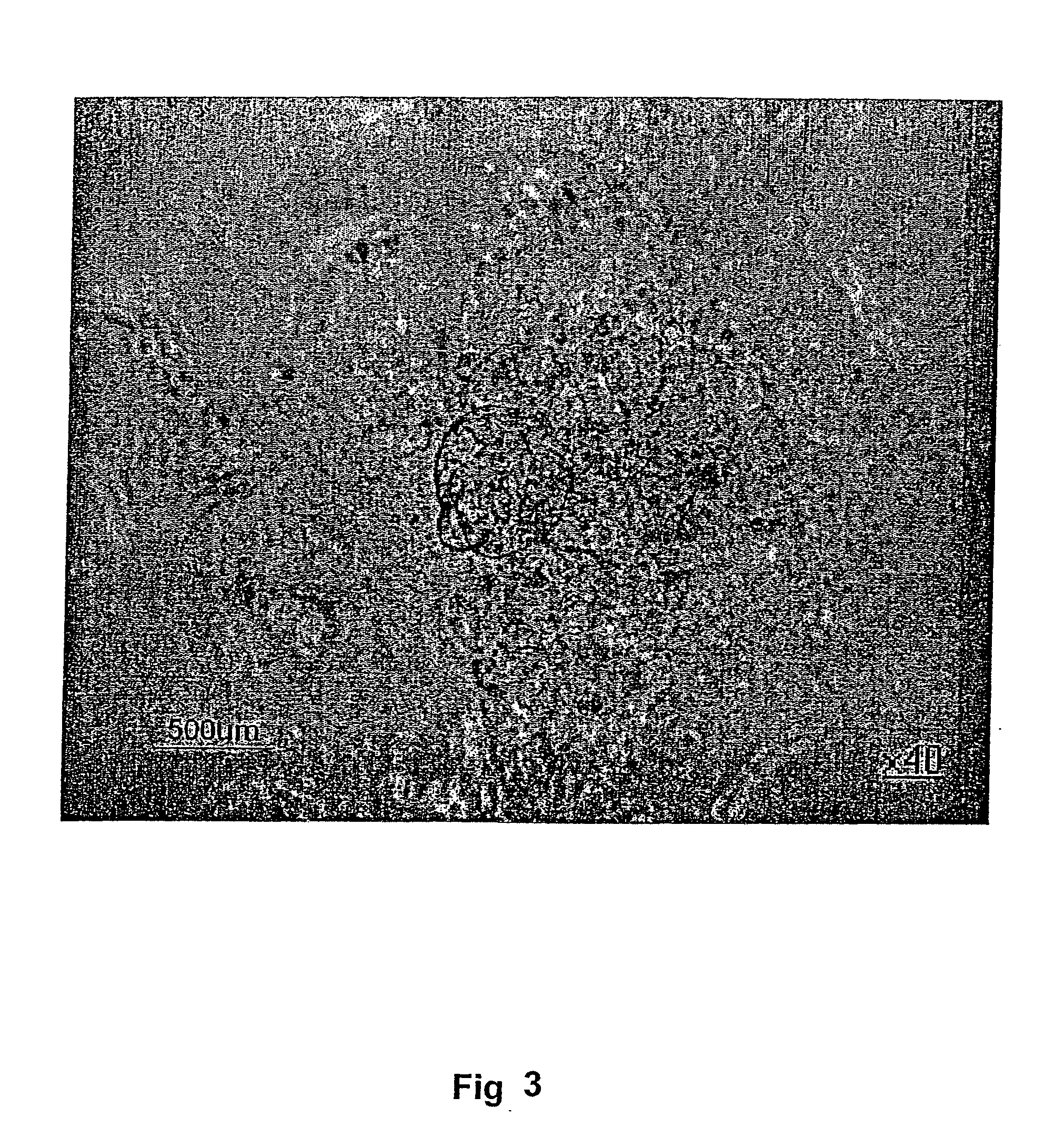Method for the establishment of a pluripotent human blastocyst - derived stem cell line
- Summary
- Abstract
- Description
- Claims
- Application Information
AI Technical Summary
Benefits of technology
Problems solved by technology
Method used
Image
Examples
example 1
Establishment of an Essentially Pure Preparation of Undifferentiated Stem Cells From Spontaneously Hatched Blastocysts
[0119] Human blastocysts were derived from frozen or fresh human in vitro fertilized embryos. Spontaneously hatched blastocysts were put directly on feeder cells (EF) in BS cell medium (KNOCKOUT Dulbecco's Modified Eagle's Medium, supplemented with 20% KNOCKOUT Serum replacement, and the following constituents at the final concentrations: 50 units / ml penicillin, 50 μg / ml streptomycin, 0.1 mM non-essential amino acids, 2 mM L-glutamine, 100 μM β-mercaptoethanol, 4 ng / ml human recombinant bFGF (basic fibroblast growth factor), supplemented with 0.125 mg / ml hyaluronic acid. After plating the blastocysts on the EF cells, growth was monitored and when the colony was large enough for manual passaging approximately 1-2 weeks after plating) the inner cell mass cells were dissected from other cell types and expanded by growth on new EF cells.
example 2
Establishment of an Essentially Pure Preparation of Undifferentiated Stem Cells From Blastocysts with an Intact Zona Pellucida
[0120] For blastocysts with an intact zona pellucida, a brief pronase (10 U / ml, Sigma) incubation in rS2 (ICM-2) medium (Vitrolife, Gothenburg, Sweden) was used to digest the zona, after which the blastocyst was put directly on the EF cell layer in BS medium supplemented with hyaluronic acid (0.125 mg / ml).
example 3
Histo-Chemical Staining for Alkaline Phosphatase
[0121] The cells were harvested for RT-PCR and histological (alkaline phosphatase) and immunocytochemical analysis (see below).
[0122] RNA isolation and RT-PCR. Total cellular RNA was prepared using Rneasy Mini Kit (Qiagen) according to the manufacturer's recommendations. The cDNA synthesis was carried out using AMV First Strand cDNA Synthesis Kit for RT-PCR (Roche) and PCR using Platinum Taq DNA Polymerase (Invitrogen). Histochemical staining for alkaline phosphatase was carried out using commercially available kit (Sigma) following the manufacturer's recommendations.
PUM
| Property | Measurement | Unit |
|---|---|---|
| Fraction | aaaaa | aaaaa |
| Time | aaaaa | aaaaa |
| Time | aaaaa | aaaaa |
Abstract
Description
Claims
Application Information
 Login to View More
Login to View More - R&D
- Intellectual Property
- Life Sciences
- Materials
- Tech Scout
- Unparalleled Data Quality
- Higher Quality Content
- 60% Fewer Hallucinations
Browse by: Latest US Patents, China's latest patents, Technical Efficacy Thesaurus, Application Domain, Technology Topic, Popular Technical Reports.
© 2025 PatSnap. All rights reserved.Legal|Privacy policy|Modern Slavery Act Transparency Statement|Sitemap|About US| Contact US: help@patsnap.com



